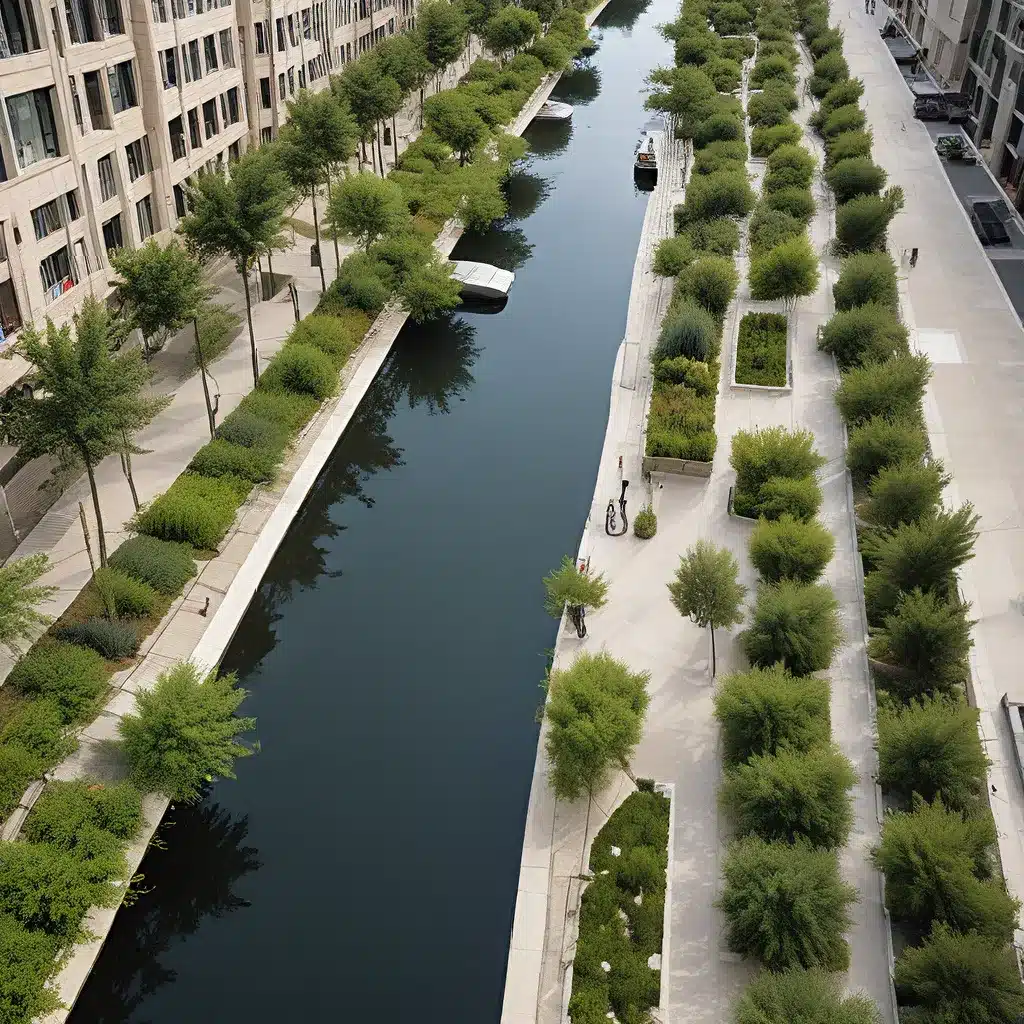
As a self-proclaimed water conservation enthusiast, I’ve always been fascinated by the incredible potential of urban landscapes to become more sustainable. And let me tell you, the challenges we face in maximizing water conservation are both complex and inspiring. It’s like trying to solve a giant puzzle, with each piece representing a different factor – from water-wise landscaping to smart irrigation systems to community engagement. But you know what they say, “Where there’s a will, there’s a way!”
Redefining the Urban Oasis
When it comes to water conservation in urban areas, one of the key aspects to consider is the design and maintenance of our landscapes. Too often, we see lush, green lawns and ornamental plants that guzzle water like there’s no tomorrow. But what if we could create urban oases that are not only beautiful, but also eco-friendly and drought-resistant? According to the Texas AgriLife Extension Service, the concept of “Earth-Kind” landscaping involves the use of a variety of environmentally friendly practices, from carefully selecting plants to implementing efficient irrigation methods.
Imagine a landscape that thrives on minimal water inputs, where native and adapted plants work in harmony to create a vibrant, low-maintenance canvas. By embracing the principles of xeriscaping, we can transform our urban spaces into living, breathing testaments to water conservation. Imagine drought-tolerant succulents adding pops of color, ornamental grasses swaying in the breeze, and trees that provide cooling shade while requiring a fraction of the water of a traditional lawn. It’s a shift in mindset, but one that can yield incredible rewards.
Harnessing Smart Irrigation Technology
Of course, designing a water-wise landscape is only half the battle. The other crucial component is ensuring that the irrigation system is as efficient as possible. The California Water Efficiency Partnership (CalWEP) has been at the forefront of promoting innovative technologies and practices to help urban areas maximize their water conservation efforts. From smart controllers that adapt to weather conditions to drip irrigation systems that deliver water precisely where it’s needed, the advancements in this field are truly remarkable.
Picture this: your sprinklers no longer run on a rigid schedule, oblivious to the recent rainstorm or the upcoming heatwave. Instead, they respond in real-time to the changing environmental conditions, adjusting their output to ensure that every drop of water is put to good use. And what about those pesky leaks that can go undetected for ages? With the help of advanced leak detection technologies, we can identify and address these issues before they become a major problem, saving precious water in the process.
But the real magic happens when we combine these smart irrigation technologies with a deep understanding of the unique water needs of different plants and landscaping elements. By tailoring our watering regimes to the specific requirements of our urban oasis, we can unlock the true potential of water conservation.
Cultivating a Culture of Conservation
Of course, as with any significant shift, the path to maximizing water conservation in urban landscapes requires more than just technological solutions. It also necessitates a change in the way we think about and interact with our outdoor spaces. The Food and Agriculture Organization of the United Nations (FAO) emphasizes the importance of integrated approaches that consider the social, economic, and environmental aspects of land management.
Imagine a community where residents not only embrace water-wise landscaping but also actively participate in its maintenance and optimization. Picture neighborhood gatherings where neighbors share tips and tricks, swap drought-tolerant plants, and celebrate their collective efforts to create a more sustainable urban environment. It’s a vision of a world where water conservation isn’t just a chore, but a source of pride and community engagement.
And let’s not forget the crucial role of education and public outreach. By raising awareness about the importance of water conservation and the various strategies available, we can empower individuals to become active stewards of their local landscapes. Imagine workshops where homeowners learn how to program their smart irrigation controllers, or community events where residents can swap ideas and get their hands dirty planting native species. It’s about creating a ripple effect, where one person’s water-wise actions inspire their neighbors to follow suit.
Weaving it All Together
As I reflect on the incredible potential of urban landscapes to become beacons of water conservation, I can’t help but feel a sense of excitement and optimism. It’s a complex challenge, to be sure, but one that is ripe with opportunities for innovation, collaboration, and community engagement.
By embracing a holistic, integrated approach that combines water-wise landscaping, smart irrigation technology, and a culture of conservation, we can transform our urban spaces into veritable oases of sustainability. Inland Waters Inc. is committed to helping communities navigate this journey, providing the expertise, tools, and resources needed to make their water conservation dreams a reality.
So, let’s roll up our sleeves and get to work, my friends. Because when it comes to maximizing water conservation in our urban landscapes, the possibilities are as endless as the water we save.


